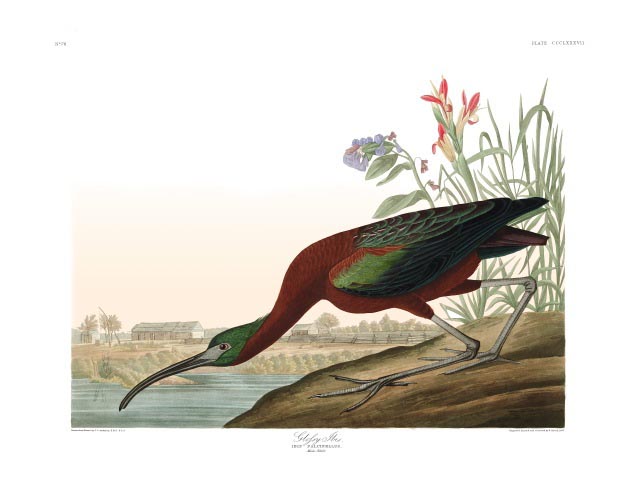|
||||||||||||||||||||
|
||||||||||||||||||||
|
|
||||||||||||||||||||
|
Ornithological Biography The first intimation of the existence of this beautiful species of Ibis within the limits of the United States is due to Mr. GEORGE ORD of Philadelphia, the friend and companion of the celebrated ALEXANDER WILSON. It was described by him in the first volume of the Journal of the Academy of Natural Sciences of Philadelphia. He states that \"on the seventh of May of the present year (1817), Mr. THOMAS SAY received from Mr. ORAM, of Great Egg Harbour, a fine specimen of Tantalus, which had been shot there. It is the first instance which has come to my knowledge of this species having been found in the United States. I was informed that a recent specimen of this bird was, likewise in the month of May, presented to the Baltimore Museum, and that two individuals were killed in the district of Columbia.\" In the sequel Mr. ORD compares it with Dr. LATHAM\'S account of the Tantalus Mexicanus of that author, and conjectures that it is the same. It is not a little curious to see the changes of opinion that have taken place within these few years among naturalists who have thought of comparing American and European specimens of the birds which have been alleged to be the same in both continents. The Prince of MUSIGNANO, for example, who has given a figure of the very individual mentioned by Mr. ORD, thought at the time when he published the fourth volume of his continuation of WILSON\'S American Ornithology, that our Glossy Ibis was the one described by the older European writers under the name of Ibis Falcinellus. Now, however, having altered his notions so far as to seem desirous of proving that the same species of bird cannot exist on both the continents, he has latterly produced it anew under the name of Ibis Ordi. This new name I cannot with any degree of propriety adopt. I consider it no compliment to the discoverer of a bird to reject the name which he has given it, even for the purpose of calling it after himself. The Glossy Ibis is of exceedingly rare occurrence in the United States, where it appears only at long and irregular intervals, like a wanderer who has lost his way. It exists in Mexico, however, in vast numbers. In the spring of 1837, I saw flocks of it in Texas; but even there it is merely a summer resident, associating with the White Ibis, along the grassy margins of the rivers and bayous, and apparently going to and returning from its roosting places in the interior of the country. Its flight resembles that of its companion, the White Ibis, and it is probable that it feeds on the same kinds of crustaceous animals, and breeds on low bushes in the same great associations as that species, but we unfortunately had no opportunity of verifying this conjecture. Mr. NUTTALL, in his Ornithology of the United States and Canada, says that \"a specimen has occasionally been exposed for sale in the market of Boston.\" I have given the figure of a male bird in superb plumage, procured in Florida, near a wood-cutter\'s cabin, a view of which is also given. IBIS FALCINELLUS, Bonap. Syn., p. 312. BAY OR GLOSSY IBIS, Nutt. Man., vol. ii. p. 88. GLOSSY IBIS, Ibis Falcinellus, Aud. Orn. Biog., vol. iv. p. 608. Male, 25, 42; wing, 11 1/4. Rare or accidental in the Middle Atlantic Districts; more common in South Florida and Texas, where it breeds. Rarely seen far inland. Migratory. Adult Male. Bill very long, slender, higher than broad, compressed, tapering, acute, obtuse. Upper mandible with the dorsal line arched in its whole length, the ridge convex, broader towards the end, the sides at the base nearly erect, towards the end very convex and narrow, the ridge separated in its whole length from the sides by a deep narrow groove, the edges inflected and sharp. Nostrils basal, dorsal, linear, direct. Lower mandible more slender than the upper, its angle very narrow, and protracted in the form of a groove to the tip, the sides convex, the edges sharp, but strong and closely approximated, bearing only a very narrow groove between them. Head small, compressed, oblong; neck long and slender; body slender, deeper than broad; wings rather large. Feet very long, slender; tibia long, bare about half its length, and covered all round with hexagonal scales; tarsi long, slender, anteriorly covered with numerous broad scutella laterally with angular scales, beneath flattened, with thick soft margins; the anterior connected at the base by membranes, of which the outer is large; claws rather small, slightly arched, compressed, tapering, pointed, that of the middle toe with a sharp thin edge. There is a bare space margining the forehead, occupying the part before the eye, and extending a little beyond it. Feathers of the head and neck slender lanceolate; those of the former glossy and compact, of the latter blended, as are those of the breast and abdomen, which are ovate. The upper parts highly glossed, with silky lustre, the feathers generally ovate and rounded. Wings long, ample, the first primary a quarter of an inch shorter than the second, which is two-twelfths longer than the third, the rest moderately graduated; the first sinuate on the inner web near the end, the second less deeply so; some of the inner secondaries elongated, but rounded, and when the wing is closed an inch and ten-twelfths shorter than the longest primary. Tail short, very slightly emarginate, of twelve rounded feathers. Bill black; bare part of the head greyish-blue; iris hazel; feet greyish-black, claws brown. The upper part and sides of the head are dark glossy, with purplish reflections. The neck, a portion of the back anteriorly, the breast, abdomen, and legs, are of a deep rich brownish-red or dark chestnut; part of the breast shaded with green, the sides dusky, tinged with green, as are the lower wing-coverts, and lower tail-coverts. Excepting the anterior edge of the wing, and the anterior scapulars, which are deep glossy brownish-red, the upper part; are splendent dark green, glossed with purple; the primaries black, shaded with green; the tail glossy with purple reflections. Length to end of tail 25 inches; to end of claws 30 1/2; bill along the ridge 5 4/12, along the edge of lower mandible 5 2/12; wing from flexure 11 1/4; tail 4 1/4; the bare part of tibia 2 1/2; hind toe 1 1/12, its claw (5 1/4)/12; second toe 1 11/12, its claw (6 1/4)/12; third toe 2 8/12, its claw 7/12; fourth toe 2 4/12, its claw 5/12. The Female is similar to the male, but somewhat less. The young in its second plumage has the bill dusky, tinged with yellow, the bare part of the head dusky; the feet blackish-brown, the head, neck and lower parts are greyish-brown, the head and greater part of the neck marked with small longitudinal streaks of white, of which there are two on each feather. All the upper parts are brackish-green, glossy in a less degree than those of the adult. On comparing adult American specimens with others obtained on the old continent, I can perceive no difference between them. A young Mexican bird, and one from India, are also precisely similar. I cannot therefore entertain a doubt as to the identity of our bird with the Tantalus Falcinellus of LATHAM and other European writers, which has been shewn by SAVIGNY to be the Black Ibis of the ancients. |
||||||||||||||||||||


| Home | Gallery | Audubon Biography | About Edition | Testimonials | Authorized Dealers | Links | Contact Us |
| SEARCH RESULTS | |||
| Divers of Lakes and Bays, Wanderers of Seas and Coasts | |||
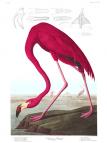 | Plate: 431 American Flamingo | ||
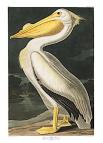 | Plate: 311 American White Pelican | ||
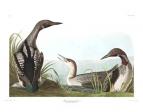 | Plate: 346 Black-throated Diver | ||
 | Plate: 307 Blue Crane or Heron | ||
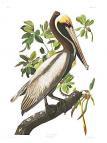 | Plate: 251 Brown Pelican | ||
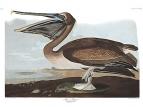 | Plate: 421 Brown Pelican | ||
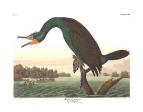 | Plate: 252 Florida Cormorant | ||
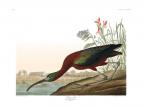 | Plate: 387 Glossy Ibis | ||
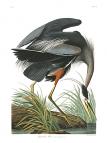 | Plate: 211 Great Blue Heron | ||
| |||

© Copyright 2007-2025 Zebra Publishing, LLC. | All Rights Reserved Terms of Use
Powered by Fusedog Media Group
